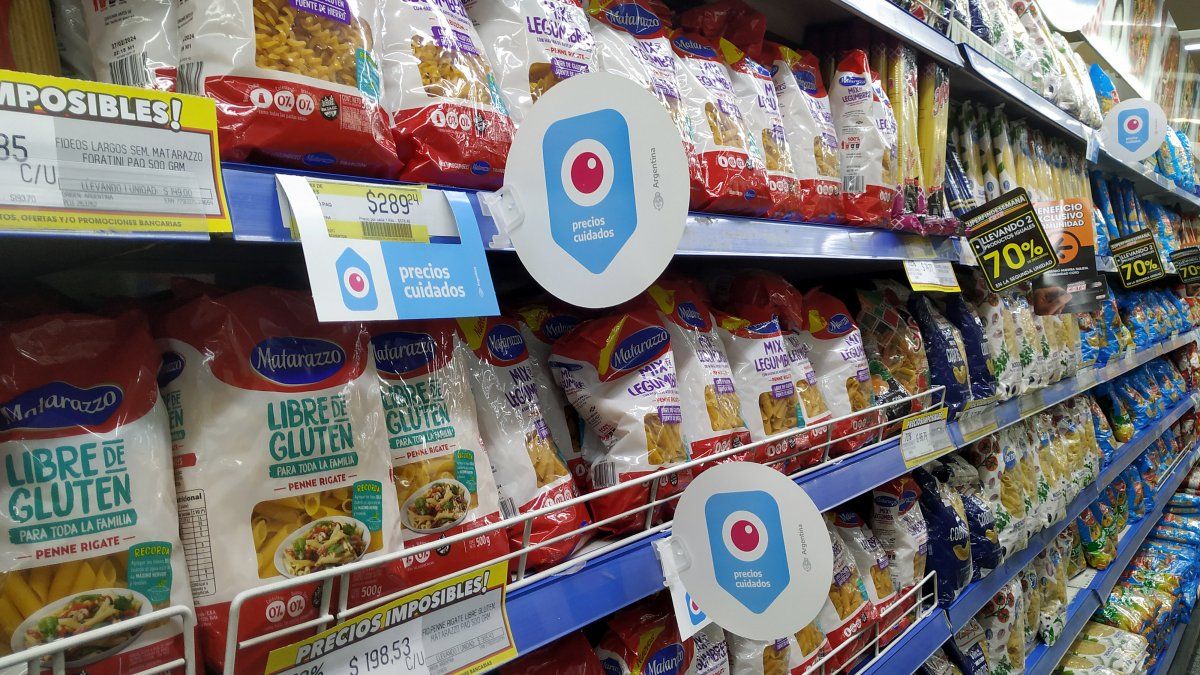This is an official data published by the Indec in a section with information on the Consumer Price Index. It reflects the percentage of surveyed prices that are within Care Prices in Greater Buenos Aires. The largest amount belongs to the food and beverage category, and some openings stand out: of the total prices surveyed for flour by the Indec, 68.5% belongs to Care Prices; in sweet cookies, the percentage is 34.2%; in cola-based soft drinks, 73.1%; in yerba mate, 54.6%; and in bleach of 33.5%.
“The presence of these prices in the sample does not depend on survey decisions. In general, the products that are part of the Care Prices agreement are updated by modifying the products and presentations that are included”, clarifies the Indec. During the previous government, the weight of Care Prices in the Indec began at 3% and closed in December 2019 at 0.49%. During the first year of the Frente de Todos it rose to 3%, and it skyrocketed after the freezing carried out by Feletti during the legislative elections.
Regarding the reason for this drop, Matías De Luca, an economist at LCG, said: “What could be happening is that Care Prices is reducing its basket of products, fewer and fewer contracts must be renewed.” Along the same lines, Lucio Garay Méndez, economist at Eco Go, analyzed: “The values to which the percentage of Care Prices converges over the total surveyed are close to those seen in much of 2021. The percentage increases strongly in October 2021, which coincides with the arrival of Feletti at Comercio. The changes introduced in the basket of price controls may have affected the percentages”.
When asked why there is less, Garay Méndez considered two possibilities: “One is shortages, which was one of the criticisms in this period of price acceleration, while products with controlled prices rose behind. And if not, the products included in the new control baskets have lost representativeness in consumption.”
These changes in participation could be affecting the acceleration of food inflation so far in 2022. De Luca, from LCG, considered: “It affects because the portion of food that is updated at a lower rate is less and less, then the increase in the rest of the foods that have the free price begins to hit more fully ”. For his part, Garay Méndez added: “It affects because there is a change between goods that are updated every few months, versus those that can be highlighted more often. But the effect is limited because price controls predominate in non-fresh goods (everything except meats, fruits and vegetables), which have less weight in food and beverages”.
In view of the renewal of Care Prices in July, the Secretary of Commerce will make changes: it will maintain the program, but with fewer items and a higher rate of increase, to ensure supply and narrow the gap with those outside the program. Currently there are 1,357, while when the government took office there were 310. As the program is renewed on July 7, for the moment “1 to 1” meetings are being held between the companies and Guillermo Hang, Secretary of Commerce.
The companies will ask to remove more important items and increases: they assure that they had strong increases in raw materials, energy and transportation. so far this year, Accumulated inflation in food was 33%, while Care Prices products rose by half: 17%, according to data from the food industry. Wholesale prices, when leaving the factory, had a rise of 30.6% in the same period.
Furthermore, if a solution is not reached with the Wheat Trust, there could be a massive output of program products in noodles and flour, because they are subsidized with that fund, which practically has no more money left. The drop in participation of Prices Care in the Indec survey was a topic of conversation in the meeting that Hang held with Copal. The complaint was that the “effort” made by companies is not reflected in the IPC.
Source: Ambito
David William is a talented author who has made a name for himself in the world of writing. He is a professional author who writes on a wide range of topics, from general interest to opinion news. David is currently working as a writer at 24 hours worlds where he brings his unique perspective and in-depth research to his articles, making them both informative and engaging.




